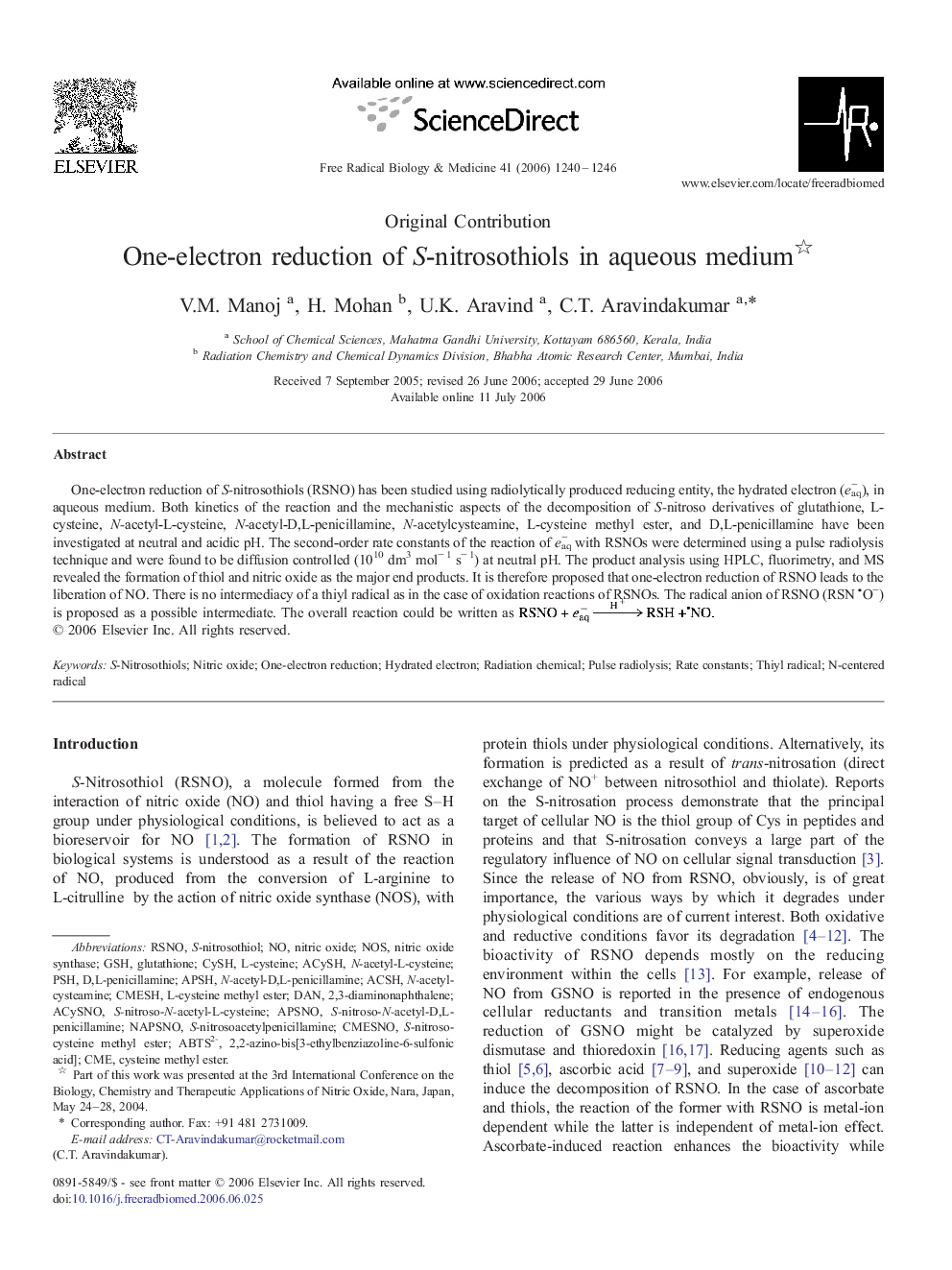| Article ID | Journal | Published Year | Pages | File Type |
|---|---|---|---|---|
| 1911387 | Free Radical Biology and Medicine | 2006 | 7 Pages |
One-electron reduction of S-nitrosothiols (RSNO) has been studied using radiolytically produced reducing entity, the hydrated electron (eaq−), in aqueous medium. Both kinetics of the reaction and the mechanistic aspects of the decomposition of S-nitroso derivatives of glutathione, L-cysteine, N-acetyl-L-cysteine, N-acetyl-D,L-penicillamine, N-acetylcysteamine, L-cysteine methyl ester, and D,L-penicillamine have been investigated at neutral and acidic pH. The second-order rate constants of the reaction of eaq− with RSNOs were determined using a pulse radiolysis technique and were found to be diffusion controlled (1010 dm3 mol− 1 s− 1) at neutral pH. The product analysis using HPLC, fluorimetry, and MS revealed the formation of thiol and nitric oxide as the major end products. It is therefore proposed that one-electron reduction of RSNO leads to the liberation of NO. There is no intermediacy of a thiyl radical as in the case of oxidation reactions of RSNOs. The radical anion of RSNO (RSNO−) is proposed as a possible intermediate. The overall reaction could be written as
